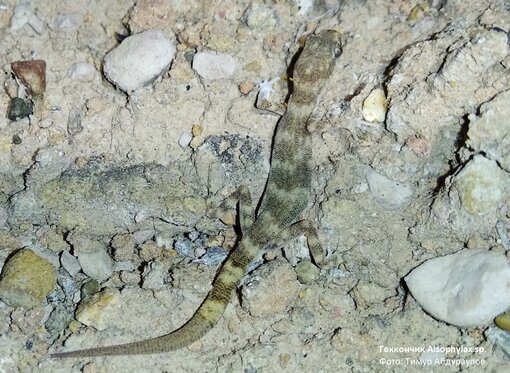Greifswald / Fergana Valley (Uzbekistan): The new species was recently confirmed by genetic analysis. The DNA now reveals: The closest relatives are the Caspian straight-fingered gecko (Alsophylax pipiens) and the southern straight-fingered gecko (Alsophylax laevis), which occur at a considerable distance from the current locality. Thus, it is very likely that the new gecko species is highly specialised and bound to its local habitat, hence endemic.
Alsophylax sp. occurs in the Uzbek Fergana Valley, in very small-scale areas that are heavily dissected by settlements and traffic infrastructure. Due to its fertile soils, situated on the alluvial fans of the Tienshan Mountains and the Pamirs, the Fergana Valley is one of the most favourable locations in Central Asia and thus also one of the most sought-after settlement areas in Uzbekistan, which is otherwise barren and characterised by desert and semi-desert.
Due to the growing population and the need for agricultural land, which also serves the country's food security, still pristine natural areas such as the habitat of Alsophylax sp. have been continuously pushed back. The Global Reptile Assessment, recently published by the International Union for Conservation of Nature (IUCN), found that 1/5 of all reptile species are threatened with extinction.
If even the last semi-natural refuges are subjected to management, the newly discovered gecko will also disappear. Rustam Murzakhanov, project coordinator at the Succow Foundation in Greifswald and responsible for the coordination of this research project: "New areas that were previously considered unsuitable are therefore increasingly being included in active agriculture. This destroys the habitat of the endemic species that only occur there. It is all the more important to designate new protected areas as quickly as possible."
There are also conservation concepts that can mediate between a radical total reserve on the one hand and uncompromising management for the valorisation of land on the other. In these approaches, human management serves to preserve the natural space, resources are not overexploited, the land is managed sustainably and space is given to wilderness development. The Succow Foundation would like to implement this conservation concept together with local inhabitants and state institutions in order to give the newly discovered gecko a future.
In this way, the project forms the basis for future conservation, because you have to know and understand what you want to conserve. Craig Hilton-Taylor, head of the IUCN’s Red List Unit, also confirms in an IUCN press release to the above-mentioned study: "While the results of the assessment are highly concerning, this milestone gives us reason for hope as it will guide conservation actions where they are most urgently needed."
In the project "Conservation of key natural complexes in the Fergana Valley", the Succow Foundation is conducting comprehensive research expeditions to assess the flora and fauna. Thanks to the "Programme on Conservation of Key Biodiversity Areas in Mountainous Regions of Central Asia" of the WWF (World Wide Fund for Nature) and with financial support from the CEPF (Critical Ecosystem Partnership Fund), biodiversity data continues to be collected. We are curious to see what else there is to discover in the last remaining white spots on earth.
![[Translate to EN:] Banner Stiftung](/fileadmin/_processed_/b/c/csm_banner-stiftung_fee6c1c492.jpg)
